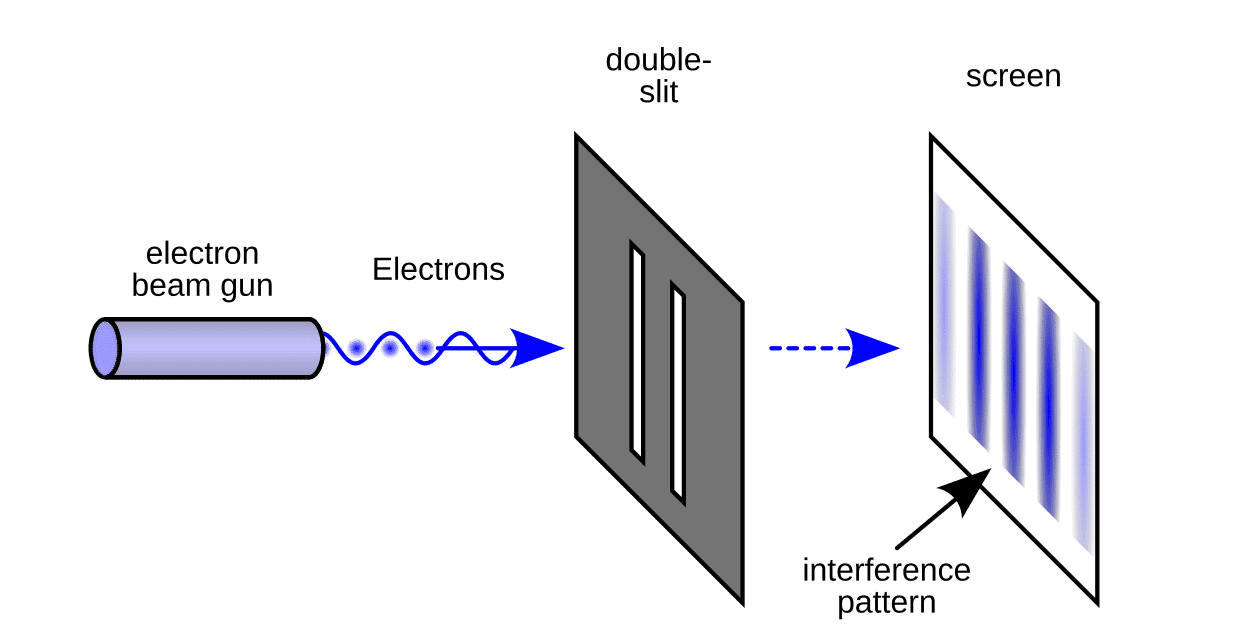What Is an AI Chip?
An AI chip, or artificial intelligence chip, is a specialized microprocessor designed to accelerate and optimize the computation of artificial intelligence algorithms, particularly those related to machine learning and deep learning. These chips are engineered to handle the massive volumes of data and complex mathematical operations required by modern AI applications, from natural language processing to computer vision, autonomous systems, and generative AI models. Unlike general-purpose processors, AI chips are purpose-built to perform matrix multiplications, tensor operations, and parallel processing with high efficiency, speed, and low power consumption.
The development of AI chips marks one of the most significant technological revolutions in computing since the invention of the microprocessor. They represent a shift from traditional computing paradigms—where CPUs handled most computational workloads—to an architecture specifically tailored for the unique demands of neural networks and data-driven computation. In today’s world, AI chips power everything from smartphones and data centers to self-driving cars and supercomputers.
To understand what an AI chip is and how it functions, it is essential to explore its architecture, design philosophy, evolution, and impact on the broader technological landscape.
The Need for Specialized AI Hardware
Artificial intelligence, especially in its modern form based on deep learning, requires enormous computational power. Deep neural networks consist of multiple layers with millions or even billions of parameters. Training such models involves performing trillions of mathematical operations, mainly matrix multiplications, and applying optimization algorithms across vast datasets.
Traditional CPUs (Central Processing Units), while versatile, are not optimized for these workloads. A CPU executes instructions sequentially and is designed for general-purpose tasks such as running applications, managing memory, and handling input/output operations. Deep learning, however, benefits from massive parallelism, where thousands of calculations can be carried out simultaneously. This parallel nature of AI computation led to the need for new hardware architectures capable of performing these operations efficiently.
Initially, researchers turned to GPUs (Graphics Processing Units) as they were already designed for parallel operations used in rendering graphics. Over time, GPUs became the backbone of AI computation. However, as the field advanced, limitations in GPU power efficiency, scalability, and cost began to surface. This gave rise to the design of custom AI chips—hardware created explicitly to accelerate AI workloads by maximizing throughput, minimizing latency, and optimizing energy consumption.
AI chips are now essential for both training and inference. Training involves building and adjusting neural networks using large datasets, while inference refers to deploying trained models to make predictions or decisions in real-world applications. Each stage demands different hardware characteristics: training requires enormous computational throughput, while inference prioritizes speed and energy efficiency.
The Core Principles Behind AI Chip Design
The architecture of an AI chip is fundamentally different from that of a CPU or even a GPU. It is designed around the mathematical operations that dominate AI algorithms—matrix multiplications, tensor manipulations, and nonlinear transformations.
At the core of AI chip design lies the principle of parallelism. Neural networks process vast arrays of numbers simultaneously. To achieve this, AI chips employ thousands to millions of smaller computing units, each capable of performing simple arithmetic operations like addition and multiplication. When arranged in parallel, these units can execute operations on large matrices concurrently, dramatically increasing computational speed.
Another critical design principle is data locality. Moving data between memory and computation units consumes significant time and energy. AI chips aim to minimize this movement by integrating memory closer to processing units—a concept known as “processing in memory.” This reduces latency and power consumption, enhancing efficiency.
Additionally, AI chips often employ reduced precision arithmetic. Traditional processors use 32-bit or 64-bit precision for calculations, which can be excessive for neural networks. AI algorithms can tolerate small numerical inaccuracies without significant loss of accuracy, allowing AI chips to use 16-bit, 8-bit, or even lower precision operations. This optimization drastically improves speed and efficiency while reducing energy use.
The Major Types of AI Chips
AI chips encompass several categories of hardware, each with distinct architectural philosophies and use cases. These include GPUs (Graphics Processing Units), TPUs (Tensor Processing Units), NPUs (Neural Processing Units), FPGAs (Field-Programmable Gate Arrays), and ASICs (Application-Specific Integrated Circuits). Each type contributes to the AI ecosystem differently.
GPUs were the earliest form of hardware to drive the AI revolution. Originally designed to render images and process visual data, GPUs excel at parallel computations. Their architecture consists of thousands of small cores that can execute multiple operations simultaneously, making them ideal for training deep neural networks. NVIDIA was the first company to recognize and capitalize on this capability, creating CUDA, a software platform that allowed developers to use GPUs for general-purpose AI computation.
Tensor Processing Units (TPUs), developed by Google, are a form of AI-specific hardware designed to accelerate tensor operations—the mathematical building blocks of neural networks. TPUs are optimized for both training and inference, and they power many of Google’s AI services, such as Google Translate, Search, and Photos. They use systolic array architectures to perform matrix multiplications with exceptional speed and efficiency.
Neural Processing Units (NPUs) represent another category of specialized AI chips, often integrated into mobile and edge devices. Companies like Apple, Huawei, and Qualcomm have developed NPUs to perform AI tasks locally on devices, enabling features such as image recognition, natural language understanding, and augmented reality without relying on cloud computation. NPUs are designed for low power consumption, allowing real-time AI processing on smartphones, wearables, and IoT devices.
Field-Programmable Gate Arrays (FPGAs) provide flexibility and configurability. Unlike fixed-function chips, FPGAs can be reprogrammed after manufacturing to perform specific computational tasks. This makes them valuable for AI research and applications that evolve rapidly. They are particularly useful in scenarios where algorithm requirements change frequently, such as in research institutions and prototype AI systems.
Application-Specific Integrated Circuits (ASICs) represent the most optimized and efficient AI chips, built for a single purpose or a specific set of AI workloads. Unlike FPGAs, ASICs cannot be reprogrammed, but their fixed-function design offers unmatched performance per watt. They are used in large-scale data centers and embedded systems where performance efficiency and energy savings are paramount.
The Architecture of an AI Chip
The internal structure of an AI chip reflects its purpose: performing mathematical operations at incredible speeds while minimizing data movement and power consumption. At the heart of an AI chip are arrays of processing elements (PEs) or cores. These are small computational units that perform arithmetic operations like multiplication and addition.
AI chips use architectures such as systolic arrays or tensor cores. A systolic array consists of a network of PEs that rhythmically pass data through each other, allowing efficient matrix multiplications. Tensor cores, used in NVIDIA’s GPUs, are specialized units designed specifically for deep learning operations on multi-dimensional data arrays called tensors.
Another key aspect of AI chip architecture is memory hierarchy. Traditional chips store data in separate memory units, requiring frequent transfers that slow down processing. AI chips integrate multiple levels of memory—registers, caches, and high-bandwidth memory—close to the compute cores. Some designs even merge computation and memory in a single structure to reduce latency.
Interconnects and communication channels are also critical. AI computations often involve coordinating thousands of cores, which must communicate efficiently to share intermediate results. Advanced AI chips use high-speed interconnects and parallel buses to ensure minimal communication overhead.
Lastly, power management and thermal control are vital. High-performance AI chips generate significant heat, and maintaining efficiency requires careful design to distribute workloads evenly and manage energy use intelligently.
The Role of AI Chips in Training and Inference
AI chips serve two main purposes: training models and running inference. Each phase imposes different computational demands, leading to different hardware optimizations.
Training involves feeding massive datasets into a neural network, adjusting weights iteratively through backpropagation. This process requires enormous parallel computation and memory bandwidth. Training is typically done on large clusters of GPUs, TPUs, or high-end ASICs housed in data centers.
Inference, by contrast, applies the trained model to new data for prediction or classification. For example, when a voice assistant interprets a command or an autonomous car recognizes a stop sign, it performs inference. Inference must be fast and energy-efficient, especially in edge devices such as smartphones and embedded systems.
To address these distinct needs, some AI chips are optimized for training—focusing on raw computational power—while others are designed for inference, emphasizing low latency and power efficiency. In recent years, hybrid chips capable of handling both tasks have also emerged.
The Evolution of AI Chips
The evolution of AI chips parallels the growth of AI itself. In the early days of machine learning, CPUs performed most of the work. However, as neural networks grew deeper and datasets larger, CPUs became insufficient. The advent of GPUs in AI research during the mid-2000s transformed the field, enabling the rapid training of complex models such as convolutional neural networks (CNNs).
By the 2010s, companies like Google, Apple, and NVIDIA began developing purpose-built AI accelerators. Google’s TPU in 2016 was among the first major steps toward custom AI hardware. Apple followed with its Neural Engine, integrated into iPhones to handle on-device AI tasks like facial recognition and augmented reality.
Today, a growing ecosystem of AI chip companies—such as NVIDIA, AMD, Intel, Graphcore, Cerebras, and Habana Labs—continues to innovate. Modern AI chips are not only faster but also more energy-efficient, scalable, and specialized for different tasks. Cerebras, for example, developed a wafer-scale AI chip, the largest single piece of silicon ever produced, to accelerate deep learning workloads.
As AI models continue to grow in complexity, from GPT-style language models with hundreds of billions of parameters to advanced multimodal systems, AI chips will evolve to meet the escalating demands of computation, memory, and data throughput.
AI Chips in Edge Computing
A significant shift in recent years has been the rise of edge computing, where AI processing occurs closer to the data source rather than in centralized data centers. This approach reduces latency, enhances privacy, and minimizes data transmission costs.
AI chips designed for edge computing must balance performance with power efficiency. They often rely on NPUs or compact ASICs integrated into smartphones, drones, robots, and IoT devices. These chips enable real-time decision-making without the need for cloud connectivity.
For example, Apple’s Neural Engine allows iPhones to perform facial recognition, augmented reality, and speech processing locally. Similarly, autonomous drones use onboard AI chips to navigate and avoid obstacles in real-time, relying solely on onboard computation. This decentralization of AI computation marks a new frontier in chip design, where the focus shifts from raw power to energy efficiency and adaptability.
The Challenges in AI Chip Development
Despite rapid progress, designing and manufacturing AI chips is an immense challenge. One of the biggest obstacles is balancing computational performance with energy efficiency. The increasing complexity of AI models demands chips that can process massive datasets quickly without consuming excessive power.
Another challenge lies in data movement. Moving data between memory and processing units remains one of the most energy-intensive operations. New approaches, such as in-memory computing and neuromorphic design, are being explored to address this bottleneck.
Scalability also poses a major difficulty. Training large AI models often requires distributing computation across multiple chips and servers. Ensuring efficient communication and synchronization between these units is critical. Hardware interconnects like NVIDIA’s NVLink and Google’s TPU interconnects are designed to mitigate this problem, but achieving perfect scalability remains elusive.
Manufacturing costs and supply chain limitations further complicate AI chip development. Advanced AI chips rely on cutting-edge semiconductor fabrication processes, often at the 3-nanometer scale or smaller. Producing these chips requires immense capital investment and highly specialized facilities, making entry into the market challenging for new companies.
Finally, software compatibility presents an ongoing issue. AI chips must integrate seamlessly with existing software frameworks like TensorFlow and PyTorch. Developing optimized compilers, drivers, and APIs to fully exploit hardware capabilities is as important as the chip design itself.
Neuromorphic and Quantum AI Chips
The future of AI chips may lie beyond conventional digital architectures. Two promising directions are neuromorphic computing and quantum AI chips.
Neuromorphic chips are inspired by the human brain. Instead of performing sequential digital computations, they mimic the brain’s structure of neurons and synapses. This design allows them to perform computations in an event-driven, massively parallel manner, leading to extraordinary energy efficiency. Intel’s Loihi and IBM’s TrueNorth are examples of neuromorphic processors that emulate neural architectures. Such chips excel in pattern recognition, adaptive learning, and sensory data processing.
Quantum AI chips, meanwhile, harness the principles of quantum mechanics to perform computations that would be impossible for classical systems. Quantum bits, or qubits, can exist in multiple states simultaneously, allowing quantum processors to explore many possible solutions in parallel. While still in their infancy, quantum AI chips promise to revolutionize optimization, cryptography, and machine learning by dramatically accelerating certain computations.
The Economic and Strategic Importance of AI Chips
AI chips are not merely technical innovations—they are strategic assets in the global economy. Nations and corporations recognize that control over advanced semiconductor manufacturing and AI hardware confers significant economic and geopolitical advantages.
Countries such as the United States, China, and South Korea have invested heavily in AI chip research and production. The U.S. leads through companies like NVIDIA, Intel, and AMD, while China is rapidly developing domestic alternatives such as Huawei’s Ascend and Alibaba’s Hanguang chips. This technological race extends beyond commerce; it shapes national security, scientific leadership, and global influence.
AI chips also play a crucial role in data sovereignty. By enabling AI processing locally within national borders, countries can protect sensitive information and reduce dependence on foreign cloud infrastructure.
AI Chips and the Environment
As AI computations grow in scale, so too does their environmental impact. Training large neural networks consumes vast amounts of electricity and contributes to carbon emissions. AI chips are central to addressing this challenge by improving computational efficiency and reducing power consumption.
Modern AI chip manufacturers are exploring energy-efficient designs, advanced cooling systems, and novel materials to mitigate environmental effects. Edge AI, which reduces data transmission to centralized servers, also helps decrease overall energy usage. The future of sustainable AI depends largely on how effectively AI chips balance performance with environmental responsibility.
The Future of AI Chip Innovation
The future trajectory of AI chip development points toward greater specialization, scalability, and integration with emerging technologies. Chipmakers are exploring three-dimensional architectures, optical interconnects, and advanced fabrication techniques to overcome current physical limitations.
Heterogeneous computing, which combines multiple types of processors—CPUs, GPUs, and AI accelerators—on a single chip, is becoming increasingly popular. This approach allows devices to dynamically allocate workloads to the most suitable processor type, optimizing performance and efficiency.
AI chips are also becoming more adaptive. Through dynamic reconfiguration, chips can alter their structure to suit different workloads, merging the flexibility of FPGAs with the efficiency of ASICs. Integration with 5G networks, robotics, and augmented reality will further expand their applications.
In the coming decades, as artificial intelligence becomes embedded in every aspect of society, AI chips will form the foundation of intelligent systems that learn, reason, and interact with the world.
Conclusion
An AI chip represents far more than a piece of silicon; it embodies the convergence of hardware and intelligence. By tailoring computational architectures to the demands of machine learning, AI chips have transformed how machines process information, interpret data, and make decisions. They have enabled breakthroughs in healthcare, transportation, communication, and countless other domains.
From GPUs and TPUs to neuromorphic and quantum processors, AI chips continue to evolve, pushing the boundaries of what is computationally possible. They reflect the ongoing partnership between human ingenuity and machine capability—a partnership that defines the future of technology.
As the world moves toward increasingly intelligent systems, the AI chip will remain the beating heart of artificial intelligence, driving progress in science, industry, and human knowledge. It is not merely the engine of AI—it is the hardware foundation of the intelligent age itself.






